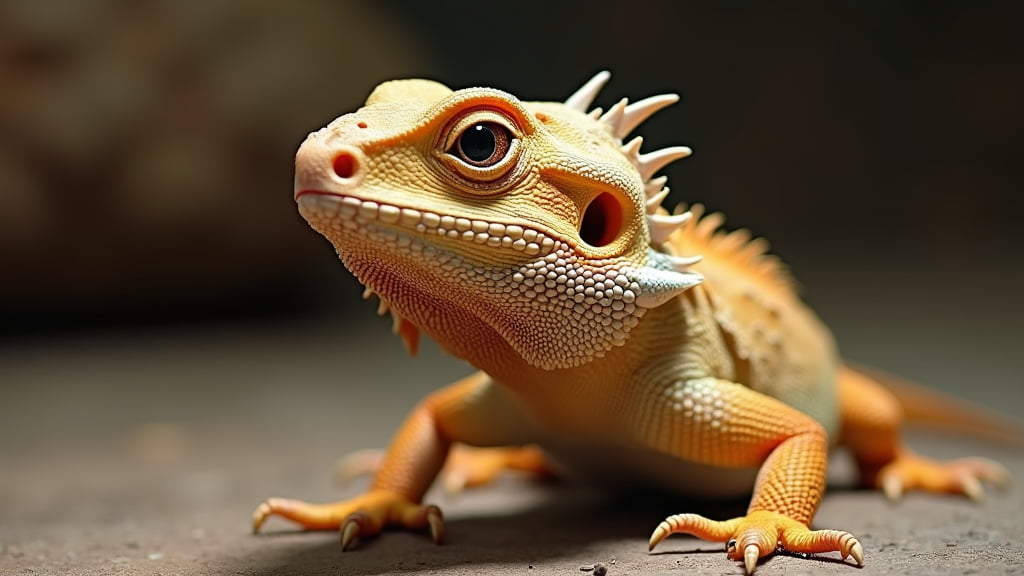Introduction
Breeding bearded dragons can be an incredibly fulfilling endeavour, offering hobbyists the chance to witness the fascinating journey from egg to hatchling. However, it’s not a step to be taken lightly. Breeding these reptiles requires meticulous preparation, careful planning, and a deep understanding of their specific needs. In this guide, we’ll walk you through everything you need to know about preparing for bearded dragon breeding—from choosing the right pair to setting up the perfect environment. Whether you’re a veteran herpetologist or a curious newcomer, this comprehensive guide will help ensure a successful breeding season. Let’s dive in!
Selecting the Right Breeding Pair
Health and Age Criteria
Selecting a healthy and mature bearded dragon pair is the first and foremost step in breeding.
- Age and Maturity: Male and female bearded dragons should ideally be at least 18 months old to ensure they are sexually mature. Breeding dragons too early can lead to health complications for both the parents and offspring.
- Health Check: Make sure both dragons are in optimal health. This includes a vet check-up to rule out parasites, illnesses, or genetic conditions. Any health issue should be addressed well in advance.
Genetic Considerations
Breeding for desirable traits such as colour, size, and temperament requires an understanding of the genetic background of your bearded dragons.
- Morphs and Colours: If you’re aiming to breed for specific morphs, make sure you understand the genetic implications. Some morphs can lead to health issues if not bred responsibly.
- Avoid Inbreeding: To maintain genetic diversity, avoid breeding closely related dragons. Inbreeding can lead to a host of health issues down the line.
Creating the Ideal Breeding Environment
Habitat Setup
The environment you create for your breeding pair can significantly impact the success of the breeding process.
- Separate Enclosures: Keep the male and female in separate enclosures initially to prevent stress. Introduce them only for mating.
- Optimal Temperature: Maintain an ideal temperature gradient in the tank—around 32°C (90°F) in the basking area and 24°C (75°F) in the cooler zones.
- Lighting: Use UVB lighting to support their health and stimulate natural behaviours essential for breeding.
Triggering the Breeding Cycle
Certain environmental cues can help trigger the breeding cycle.
- Brumation: Mimicking winter conditions through a process known as brumation can initiate the breeding cycle. Reduce the light and temperature for a few months before returning to normal conditions.
- Increased Feeding: Increase the amount of food offered to the female after the brumation period to help her build up the necessary reserves for laying eggs.
The Mating Process
Introduction Techniques
Introducing your bearded dragons for mating is a delicate process.
- Controlled Environment: Introduce the pair in a neutral, controlled environment to reduce territorial aggression.
- Observation: Keep a close eye on them during the initial meeting. Separate them immediately if any signs of aggression appear.
Post-Mating Care
After successful mating, both dragons will require specific care to ensure the health of the female and the successful development of the eggs.
- Female’s Diet: Increase calcium intake through supplements and calcium-rich foods to support egg development.
- Male’s Recovery: Provide a high-protein diet for the male to recover lost energy.
Egg Laying and Incubation
Preparing the Lay Box
A gravid (egg-carrying) female will need a lay box to deposit her eggs.
- Setup: The lay box should be filled with a moist substrate such as vermiculite or eco earth to help the female bury her eggs.
- Depth: Ensure the box is deep enough for her to dig—around 10 to 12 inches is ideal.
Incubation Process
Once the eggs are laid, they need to be carefully incubated.
- Incubation Setup: Place the eggs in an incubator set to around 28°C (82°F) with a humidity level of 75-80%.
- Monitoring: Keep an eye on the eggs for any signs of mould or desiccation, and adjust humidity levels as needed.
Conclusion
Breeding bearded dragons is a rewarding but complex endeavour that requires preparation, knowledge, and a commitment to responsible practices. By selecting the right breeding pair, creating an ideal environment, accurately timing their breeding cycle, and providing proper post-mating care, you can significantly improve your chances of a successful breeding season. Remember, when in doubt, consult with a reptile vet to ensure the health and well-being of your beloved pets. Start your breeding journey with caution and care, and you’ll be rewarded with the joy of watching new life begin.
Meta Description
Discover the essential steps and expert advice for successful bearded dragon breeding. Learn how to choose the right pair, create the perfect environment, and care for your dragons throughout the breeding process.
Breeding bearded dragons is as much an art as it is a science. Through experience and dedication, one can master the intricate dance of life these fascinating reptiles embark upon, making the journey incredibly rewarding. Happy breeding!
External Links:

